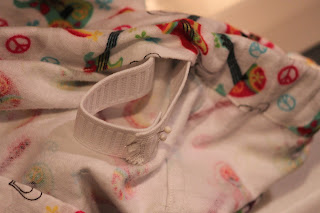My first work in progress is Spring Queen, designed by Nora Corbett of Mirabilia. My progress is shown in the photo below. I am stitching her on antique white 32-count Belfast linen, which I just love. As you can see, she is pretty close to being finished. I'm currently doing the stitches requiring metallic thread, then I have a little bit more backstitching, and then all that's left is the beading. This is a design I really need to focus on when I work on it, so I won't go back to this one til after the holidays are over and things are back into a routine.
Here is a picture of what she should look like when she is completely finished. (Sorry for the terrible photo --I have no idea what happened there!) Anyway, as you can see, I don't have far to go.
My second work in progress is an out of print design called Liza's Bouquet. It's by Ginger & Spice. I am stitching this one on 14-count white Aida fabric, using three strands of floss for really good coverage. I adore this design, but it is really huge and also has a lot of backstitching, so it will take me awhile to finish. It is a fun project to work on, though, because it is so colorful and cheery.
Here is a photo of what the finished design will look like. As you can see, I have the top part of the bouquet done, but have a LOT more to go!
And finally, my last major work in progress is a design by Long Dog Samplers called Tyler's Lion. Here is my progress on it so far:
And this is what it will look like when it's finished:
So, those are my current three projects. I am not a "rotational" stitcher (and I didn't even know there was such a thing until recently), but I do like to have more than one project going at a time. It's not so much that I get bored with one project and need to put it down, it has more to do with how hard I need to concentrate. With something like the Spring Queen design, which is fairly complex and which I'm doing on linen, I really have to concentrate when I work on it. There's lots of counting and it's easy to make a mistake. Sometimes my eyes get tired, and I will pull out Liza's Bouquet, because it's so easy to stitch on Aida. Also, although there are lots of color changes in this design, there is no confetti and most areas are small blocks of color. Finally, I started Tyler's Lion because I wanted to do a design that was all one color. I just love this look, and the added benefit of this is that this is a super easy project to take along somewhere, as all I need are my project, chart, scissors, and a skein of floss. This is also a good design to work on while watching TV, because although counting is required, the motifs are simple and there are no color changes.
Now that I've shown you where I am on my various projects, I hope to do a post in the next few days with some goals for my stitching (and maybe other hobbies, too) for the upcoming year.





























































